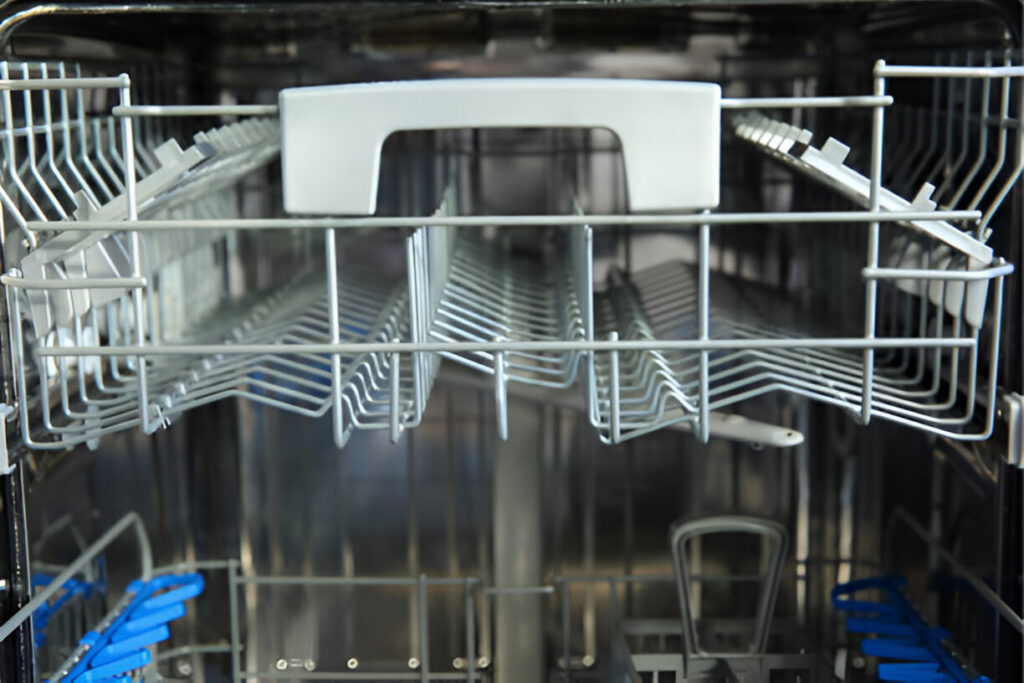Contents
- 1 Key Takeaways
- 2 Introduction to Dishwasher Functionality
- 3 Key Components of a Dishwasher
- 4 How to Perform Regular Maintenance
- 5 Signs Your Dishwasher Needs Repair
- 6 Tips for Efficient Dishwasher Use
- 7 Common Troubleshooting Questions
- 8 The Environmental Impact of Dishwashers
- 9 Conclusion: Keep Your Dishwasher in Top Shape
Key Takeaways
- Understanding the different components of a dishwasher can save time and money.
- Regular maintenance and timely replacements are key to efficient dishwasher performance.
- Basic knowledge of parts and their functions can help troubleshoot common issues.
Introduction to Dishwasher Functionality
In the hustle and bustle of daily life, dishwashers have evolved into indispensable kitchen allies. More than just time-savers, they boost efficiency by precisely handling greasy pots and delicate glassware. The effective operation of these machines relies heavily on a comprehensive understanding of their numerous parts. Recognizing and maintaining these elements, such as Samsung dishwasher components, is key to ensuring reliability and preventing unexpected breakdowns.
Beyond mere convenience, modern dishwashers are designed with water and energy conservation in mind, making them essential to environmentally conscious households. The blend of reliability and sustainability underscores their significant role in contemporary kitchens.
Key Components of a Dishwasher
- Control Panel and Circuit Board: The control panel resembles a dishwasher’s brain. Situated on the front or top edge of the door, it empowers users to customize washing routines by selecting modes and adjusting cycles. The circuit board operates behind the scenes, interpreting these user inputs into actionable commands for the dishwasher. Together, they orchestrate the complex interactions between the user and the machine, ensuring each wash meets specific cleaning demands.
- Pump and Motor: Imagine the pump and motor as the heart of the dishwasher. They are responsible for circulating water with sufficient pressure to clean dishes effectively. The pump moves water into the spray arms while the motor provides the energy to keep the water flow consistent and robust. This synergy is integral for achieving a thorough clean, efficiently removing grime while conserving resources.
- Racks and Baskets: Racks and baskets define the dishwasher’s storage architecture, influencing its capacity and utility. Versatile configurations, such as adjustable racks, cater to various dish sizes and shapes. This adaptability optimizes the appliance’s loading flexibility and ensures that spray arms have unimpeded access to every surface, facilitating uniform cleaning across all kitchenware.
- Heating Element: The heating element is critical in the drying phase, sitting discreetly at the base of most dishwashers. Elevating the water temperature boosts detergent effectiveness and speeds up the evaporation of residual water, thereby ensuring your dishes come out dry and spotless.
How to Perform Regular Maintenance
Regular maintenance breathes longevity into your dishwasher’s life. Start by cleaning the filter regularly to sidestep clogs caused by trapped food particles. Next, inspect the spray arms for blockages that impede their motion or effectiveness. Running a cleaning cycle with vinegar or store-bought cleaners can remove mineral deposits and lingering odors. Finally, gently wipe down the door seal to prevent mold and ensure a tight closure, which is crucial for optimal performance.
Signs Your Dishwasher Needs Repair
A vigilant eye can catch signs of wear and tear before they escalate. If dishes aren’t coming out as clean or dry as they should, components like the pump or heating element might require inspection. Odd noises during operation could point to motor or spray arm issues, while persistent leaks might indicate a compromised door seal or hose. Other warning signs that your dishwasher may fail include a burning smell, interior rust, or a door that no longer latches appropriately. According to Reader’s Digest, signs that it may be time to replace your appliance include prolonged cycles, pooling water at the bottom, and an aging unit—typically over ten years old. It is crucial to tackle these concerns without delay to uphold energy efficiency and avert additional harm.
Tips for Efficient Dishwasher Use
Optimizing dishwasher performance starts with loading. Arrange plates and bowls so the soiled side faces the water spray, while cups and larger utensils should rest upside down to avoid water pooling. Select the correct cycle based on the dishes’ soil levels to ensure efficient washing and energy use. Adding a rinse aid can significantly enhance drying performance, especially in areas plagued by hard water.
Common Troubleshooting Questions
Suddenly, your dishwasher refuses to start – but don’t panic. Often, this is due to a lack of power or an unsecured door latch. Similarly, drainage problems may arise from clogs in the filter or hose, requiring a quick inspection and clean-up. Lingering odors usually originate from neglected filters or food deposits, easily remedied by a cleaning cycle.
The Environmental Impact of Dishwashers
Modern dishwashers are often at the forefront of environmentally friendly appliance technologies. They use advanced sensors to adjust water and energy usage to precisely match the load’s needs, thus reducing wastage. Aligning your appliance’s settings with global water usage trends, such as opting for eco or short cycles, can further minimize environmental impact, promoting economic and ecological benefits.
Conclusion: Keep Your Dishwasher in Top Shape
Maintaining your dishwasher through simple, regular checks and timely repairs ensures it remains a reliable kitchen companion. Familiarizing yourself with basic troubleshooting and repair techniques can empower you to address minor issues without professional intervention. This proactive approach sustains your appliance’s performance and fosters a more organized and efficient kitchen.



